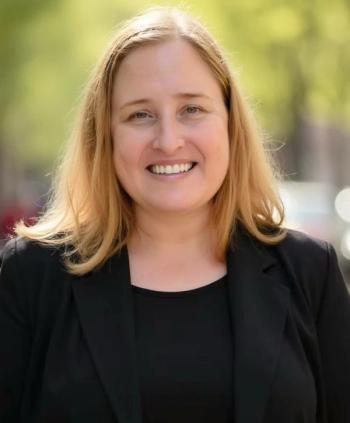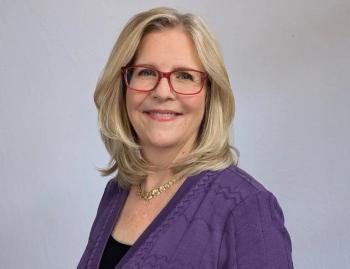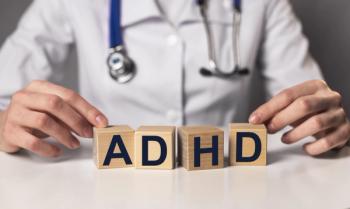
- Psychiatric Times Vol 15 No 3
- Volume 15
- Issue 3
RUPPs Expand Knowledge of Pediatric Psychopharmacology
In the two years since receiving a $1.5 million private grant from William and Joy Ruane to study the effects of psychiatric medications in children and adolescents, the division of child psychiatry at New York State Psychiatric Institute (NYSPI)-the nation's oldest psychiatric research facility-has opened a pediatric psychopharmacology research unit and established a federally supported research unit in pediatric psychopharmacology (RUPP), one of the first in the United States.
In the two years since receiving a $1.5 million private grant from William and Joy Ruane to study the effects of psychiatric medications in children and adolescents, the division of child psychiatry at New York State Psychiatric Institute (NYSPI)-the nation's oldest psychiatric research facility-has opened a pediatric psychopharmacology research unit and established a federally supported research unit in pediatric psychopharmacology (RUPP), one of the first in the United States.
In a recent interview with Psychiatric Times, B. Timothy Walsh, M.D., who holds the William and Joy Ruane Professorship in Pediatric Psychopharmacology at Columbia University's College of Physicians and Surgeons, and acts as director of NYSPI's pediatric psychopharmacology research unit, reviewed events leading to this concerted effort to fill gaps in knowledge about psychotropic medications in young people, and described the numerous studies now ongoing.
"Bill Ruane and his family are deeply committed to furthering good and useful research in child psychiatry, and have made very important contributions to the support of several research areas in child psychiatry here at NYSPI, including the early identification of psychiatric disorders," he said.
"Another area in which the Ruanes are interested is treatment. There'd been a long-standing expertise in child psychopharmacology in our department, with people like Larry Greenhill, M.D., Rachel Klein, Ph.D., and many others doing important work," Walsh said. "But we thought our existing expertise could be embellished and strengthened, and the recent developments at NYSPI illustrate what can happen when a strong private commitment, like that of the Ruanes, is combined with an excellent academic program, and state and federal support."
Walsh, who is also director of the eating disorders research unit at NYSPI, said that the funds from the Ruane endowment granted in early 1996 enabled NYSPI-part of Columbia-Presbyterian Medical Center (CPMC) -to bring together and expand already existing NYSPI and CPMC components to make a focused effort on the study of medications in children and adolescents with serious psychiatric illnesses.
"We took advantage of our federally funded Clinical Research Center, which has expertise in systematic recruitment and initial evaluation of kids; a group of psychiatrists and psychologists with expertise in the use of and evaluation of medications, a long-established clinical psychopharmacology laboratory, and an extensive support staff which carries out clinical assessments," Walsh said. "We integrated these elements into a critical mass of people capable of conducting clinical trials of psychotropic medications in important disorders affecting children and adolescents."
Walsh said that in the summer of 1996, shortly after the new pediatric psychopharmacology research unit was formed, the National Institute of Mental Health (NIMH) announced its new program to establish RUPPs across the nation, and called for applications. NYSPI then put together a proposal for an effort headed by Laurence Greenhill, M.D., and assisted by Thomas Cooper, M.A., who is in charge of the clinical psychopharmacology laboratory at NYSPI. The NYSPI team combined forces with several clinical researchers at New York University to further strengthen the application.
"The rationale of NIMH was that there had not been enough work done on psychotropic medications in younger people. This was an effort to establish centers which would have the expertise and ability to facilitate the conduct of large and definitive studies," Walsh said. "We were fortunate enough to be, along with Johns Hopkins, one of the first two funded. Since then, five more RUPPs have been added: Western Psychiatric Institute in Pittsburgh, Ohio State, Indiana University, UCLA and Yale."
Walsh said that the initial focus of the RUPPs at NYSPI and Johns Hopkins was to test the utility of SSRIs for anxiety disorders in children and adolescents.
"The first RUPP-supported trial is an ongoing collaboration between our site and Johns Hopkins to look at fluvoxamine (Luvox) in childhood anxiety disorders," he said. "Danny Pine [M.D.] at NYSPI had developed some very encouraging preliminary data suggesting that SSRIs may be of benefit to kids with these problems, and the RUPP turned out to be an ideal opportunity to test this idea.
"Furthermore, since the RUPP is supposed to be a focus around which to build additional studies, a number of other studies have subsequently been initiated under the RUPP's auspices."
Those studies include two new treatment projects in the area of childhood attention-deficit hyperactivity disorder (ADHD). These studies, both directed by Greenhill, are examining novel pharmacological treatments. One involves the utility of a Buspar (buspirone) patch, and the other involves Effexor (venlafaxine).
In addition to these newer treatment studies in ADHD, Greenhill and collaborators at NYSPI are continuing to participate in a major, multisite study funded by NIMH to compare several interventions for ADHD in a "real world" setting. The interventions include medication, intensive psychological and behavioral treatment, and a combination of the two, said Walsh.
"It's hoped that this very large and careful examination of multimodal treatment interventions will produce definitive information for practitioners about this very common disorder of childhood," he added.
Two studies of depression in children are also underway at NYSPI. One, led by Bruce Waslick, M.D., is focusing on dysthymia in adolescents.
"There's convincing information that many young people with dysthymia will develop serious mood disturbances as adults," said Walsh. "Dr. Waslick has gathered preliminary information suggesting that SSRIs may be useful for such youngsters. With support from the RUPP, the Ruane endowment and Eli Lilly and Co., Dr. Waslick plans to initiate a placebo-controlled trial of Prozac (fluoxetine) in adolescents with dysthymia. The RUPP also expects to participate in a multicenter trial of Effexor for major depression in young people."
In addition, investigators at NYSPI are examining pharmacological interventions for psychosis in adolescents, Walsh said.
"Despite the fact that psychotic disorders often begin during adolescence, there has been very little systematic study of the benefits and risks of antipsychotic medications in teenagers," he noted. "Jorge Armenteros [M.D.], is leading efforts at NYSPI in this area. With support from the Office of Clinical Trials at CPMC, he plans to initiate an examination of Zyprexa (olanzapine). He also hopes to obtain NIMH support shortly for a controlled trial of Risperdal (risperidone)."
Other pharmacological treatment studies underway in NYSPI's division of child psychiatry include the examination of Depakote (divalproex sodium) for emotionally unstable adolescents (project director: Steve Donovan, M.D.) and for adolescent suicide attempters (project director: Helen Smith, M.D.), said Walsh.
Additionally, Cevdet Tosyali, M.D., is examining the use of Paxil (paroxetine) for posttraumatic stress disorder, and Donna Moreau, M.D., is investigating the use of clonazepam (Klonopin) for panic disorder.
Walsh said that while a major thrust of the pediatric psychopharmacology effort at NYSPI is in the development of effective treatments, he and his colleagues are also examining some of the safety concerns that have been raised about the use of psychotropic agents in young people.
Explained Walsh: "In the last five years, six sudden and unexplained deaths have been reported among otherwise healthy children and adolescents taking the tricyclic antidepressant desipramine (Norpramin). This has had a major impact on the prescribing practices of child psychiatrists, even though we don't know for certain that there was a causal link between the desipramine and the sudden deaths."
Walsh also said that with support from an NIMH grant, Greenhill, Waslick and he, together with cardiologists from CPMC, are now investigating how desipramine affects the autonomic control of the heart to determine if this drug may have different effects, and possibly, different risks, in young people than in adults.
Walsh is also assisting Madelyn Gould, Ph.D., a psychiatric epidemiologist at NYSPI, who has obtained NIMH support for a study that aims to establish definitively whether there is, in fact, a relationship between taking psychotropic medications and sudden unexplained deaths among adolescents.
Furthermore, a new project, supported by the RUPP and directed by Waslick, is attempting to assess the metabolic and physiological interactions of methylphenidate (Ritalin) and clonidine (Catapres), Walsh added.
"There's been significant interest in potential advantages of combining methylphenidate with clonidine in kids with ADHD, but there are also concerns about the safety of doing that," he said. "Three deaths have been reported to have occurred in children taking the combination, although there were other serious complicating factors in all [of them]. Since Ritalin and clonidine both have effects on the cardiovascular system, we felt that it was at least theoretically possible that, under some circumstances, a potentially dangerous interaction could occur. Our studies will attempt to evaluate whether such concerns have any basis."
Walsh called the recent developments at NYSPI an example of the "burgeoning interest" in research in the use of medication in children and adolescents, and noted that it was only late in 1997 that Graham Emslie, M.D., and colleagues at University of Texas Southwestern Medical Center published a landmark study in Archives of General Psychiatry (November 1997). That study of 96 children and adolescents with depression showed that fluoxetine was superior to placebo in the acute phase treatment of this disorder.
"This was the first really convincing documentation that antidepressants are useful in kids with depression," said Walsh.
Researchers don't know why SSRIs appear to be more effective than tricyclics in depressed adolescents, Walsh said.
"It may be because of different types of depression or because of developmental issues. It may be that in the immature brain, the SSRIs are for some reason more effective than tricyclics, but we need more work to find out," he said.
Another factor that underscores the need for more research is the off-label use of medications for children and adolescents, added Walsh, noting that three of the 10 medications most frequently prescribed off-label in the pediatric age range (under 6) are psychotropics: fluoxetine, sertraline (Zoloft) and methylphenidate.
Said Walsh: "What this seems to mean is there are a lot of clinicians who think these medications are useful and are using them frequently. Yet we don't have data about whether such medications really are useful; we don't have information about how kids metabolize these drugs, or about whether there are special safety concerns peculiar to kids."
"There's going to be a lot of information coming out, and psychiatrists need to keep their eyes on this target," he said. "It's really important to read publications in this territory, because it's going to be one of the hottest areas in psychiatry in the next 5 to 10 years."
Articles in this issue
over 27 years ago
Psychiatry and Mental Illness: Are They Mass Media Targets?over 27 years ago
PTSD - Poemover 27 years ago
Atlanta's Strong STARTS Program Helps Educators Reach Troubled Kidsover 27 years ago
NIMH Cautiously Exploring Realm of Alternative Medicineover 27 years ago
Treating Adolescents by Debunking Family Mythsover 27 years ago
Preadoption Risk Factorsover 27 years ago
Sleep Deprivation, Psychosis and Mental Efficiencyover 27 years ago
The NICHD Study of Early Child CareNewsletter
Receive trusted psychiatric news, expert analysis, and clinical insights — subscribe today to support your practice and your patients.














